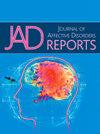Prevalence and influential factors of symptom and medication persistence in children with attention deficit hyperactivity disorder (ADHD) during COVID-19 pandemic
Q3 Psychology
引用次数: 0
Abstract
Background
The COVID-19 pandemic significantly impacted worldwide populations, triggering substantial societal changes and notably affecting children with ADHD's health. This study examined the prevalence and influential factors of ADHD symptoms and medication persistence in children during COVID-19.
Methods
This cross-sectional study at Rajanagarindra Institute of Child Development in Thailand, analyzed ADHD symptom management and medication persistence among children, using administrative data from April 3, 2019, to December 31, 2022. Supplemented by telephone interviews with parents, the study identified responsive and refractory groups, employing the SNAP IV scale and physician assessments for symptom evaluation. Medication persistence was evaluated through the medication possession ratio, dosage adjustments, additional psychiatric medications, and treatment discontinuation exceeding six months post-COVID-19. The study analyzed the influential factors using logistic regression analysis.
Results
During the COVID-19 pandemic, 1864 individuals accessed hospital services, with 90.7 % experiencing poor medication persistence, 33.4 % showing refractory ADHD symptoms, and 27.5 % exhibiting both. Among the 191 subjects (predominantly male), children aged 10–12 and 13–18 demonstrated better medication persistence than those aged 7–9, with aOR = 2.44 (95 % CI: 1.23–4.85; P = 0.011) and 4.55 (95 % CI: 1.84–11.28; P = 0.001), respectively. Symptom-responsive children with sustained medication persistence had improved hospital access compared to the refractory group (aOR = 0.43; 95 % CI: 0.19–0.98; P = 0.045). Additionally, 17.3 % reported adverse drug events.
Conclusion
During COVID-19, Thai children with ADHD struggled with severe symptoms and medication persistence, influenced by age and hospital access; telehealth and telepharmacy could offer support.
COVID-19大流行期间儿童注意缺陷多动障碍(ADHD)症状及服药持久性的患病率及影响因素
2019冠状病毒病大流行严重影响了全球人口,引发了重大的社会变化,尤其影响了多动症儿童的健康。本研究调查了COVID-19期间儿童ADHD症状的患病率及其影响因素和药物持久性。方法泰国Rajanagarindra儿童发展研究所的这项横断面研究,使用2019年4月3日至2022年12月31日的行政数据,分析了儿童ADHD症状管理和药物持久性。通过与家长的电话访谈,研究确定了反应组和难治组,采用SNAP IV量表和医生评估进行症状评估。通过药物持有率、剂量调整、额外的精神科药物和covid -19后超过6个月的治疗停药来评估药物持久性。本研究采用logistic回归分析对影响因素进行分析。结果在2019冠状病毒病大流行期间,有1864人就诊,其中90.7%的人出现服药持久性差,33.4%的人出现难治性ADHD症状,27.5%的人两者兼有。191名被试(以男性为主)中,10-12岁和13-18岁儿童的服药持久性优于7-9岁儿童,aOR = 2.44 (95% CI: 1.23-4.85;P = 0.011)和4.55 (95% CI: 1.84-11.28;P = 0.001)。与难治性组相比,持续服药的症状反应性儿童的住院率更高(aOR = 0.43;95% ci: 0.19-0.98;P = 0.045)。此外,17.3%的人报告了药物不良事件。结论在2019冠状病毒病疫情期间,泰国ADHD患儿表现出严重的症状和服药持久性,受年龄和医院就诊情况的影响;远程保健和远程药房可以提供支持。
本文章由计算机程序翻译,如有差异,请以英文原文为准。
求助全文
约1分钟内获得全文
求助全文
来源期刊

Journal of Affective Disorders Reports
Psychology-Clinical Psychology
CiteScore
3.80
自引率
0.00%
发文量
137
审稿时长
134 days
 求助内容:
求助内容: 应助结果提醒方式:
应助结果提醒方式:


